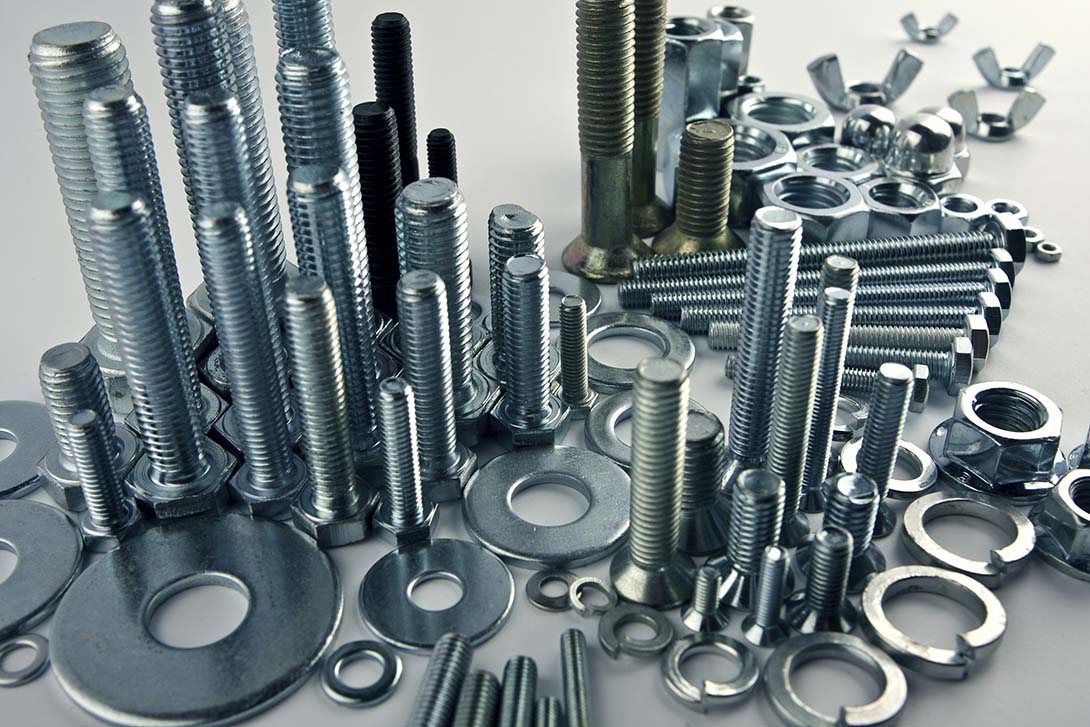
By the global applications team at Helmut Fischer headquarters
Here Helmut Fischer looks at how the use of the correct material analysis can help increase the longevity of fasteners, especially for applications in harsh environments.
Durability of fasteners
Screws, nuts, washers and bolts can be found everywhere, holding our world together, but some of them lead a much harder life than others, especially those used in harsh environments like offshore installations. As nobody ever wants to dismantle a wind turbine or oil rig only to replace the fasteners, special corrosion resistant alloys of stainless steel are used for them. This enables the supplier to guarantee a much longer service life, but that, in turn, requires clear and rigorous supervision of the material composition.
 Protecting fasteners of marine structures
Protecting fasteners of marine structures
Any part of a marine structure – whether wind turbines, oil rigs or ships – that is permanently exposed to saltwater and inclement weather must be shielded against corrosion. The same precautions taken for protecting the surfaces of these structures must also apply to even the smallest parts holding them together. Every offshore installation contains many thousands of fasteners – and every single nut, bolt or screw has an important job to fulfil, for at least as long as the structure itself.
The right material for fasteners
To avoid too frequent maintenance or, even worse, replacement of all the bolts before the structure itself is worn out, the fasteners are made of unique corrosion resistant materials that guarantee a much longer life than usual. Different kinds of stainless steel, such as 316, 317 or A4, are used – each with its alloy composition. For example, A4 stainless steel contains molybdenum, which significantly increases strength and corrosion resistance to withstand caustic agents such as saltwater (chlorides) and acids. It is recommended for use in highly aggressive environments.
Material analysis of fasteners
An excellent way to ensure that these components are made of the correct material is to analyse their exact composition. This is where the non-destructive X-ray fluorescence method (XRF) is ideal. Using the FISCHERSCOPE® X-RAY XDLM® with its powerful WinFTM® software, it is both fast and easy to take exact and accurate measurements of the alloy to determine its composition. The use of a small collimator together with a microfocus X-ray tube even allows measurements of tiny structures.
The world of automated XRF measurement
The FISCHERSCOPE® X-RAY XDL® and XDLM® X-ray use energy dispersive X-ray fluorescence (XRF) spectrometer for automated material analysis and non-destructive measurement of coating thickness to ISO 3497 and ASTM B 568 standards.
This range offers the main components of our X-ray machines – such as the detector, X-ray tubes and filter combinations – but there is a significant difference: The XDL and XDLM devices measure from top to bottom. That means convenient XRF analysis of non flat samples – complex shapes are no longer a problem. The top down approach has another advantage, it makes for easy automated XRF measurements. Equipped with a programmable sample stage, the XDL 240 and XDLM 237 are ideal for scanning surfaces, thus checking the thickness of layers on larger parts or automatically measuring lots of small pieces one after another. As with the XUL series, the ‘M’ in XDLM stands for ‘microfocus tube’, which delivers precise results even with small measuring spots and thin layers. This means that these XRF devices are particularly well suited for analysing small samples.
Measure alloy compositions the right way
Since 1983, Helmut Fischer’s XRF instruments have been integral in quality testing in almost all major industries. To verify if fasteners have the correct alloy composition needed for longevity under offshore and other harsh environments, the FISCHERSCOPE® X-RAY XDLM® is the best choice for non-destructive analysis. For more information contact your local fischer representative.

Having spent a decade in the fastener industry experiencing every facet – from steel mills, fastener manufacturers, wholesalers, distributors, as well as machinery builders and plating + coating companies, Claire has developed an in-depth knowledge of all things fasteners.
Alongside visiting numerous companies, exhibitions and conferences around the world, Claire has also interviewed high profile figures – focusing on key topics impacting the sector and making sure readers stay up to date with the latest developments within the industry.





